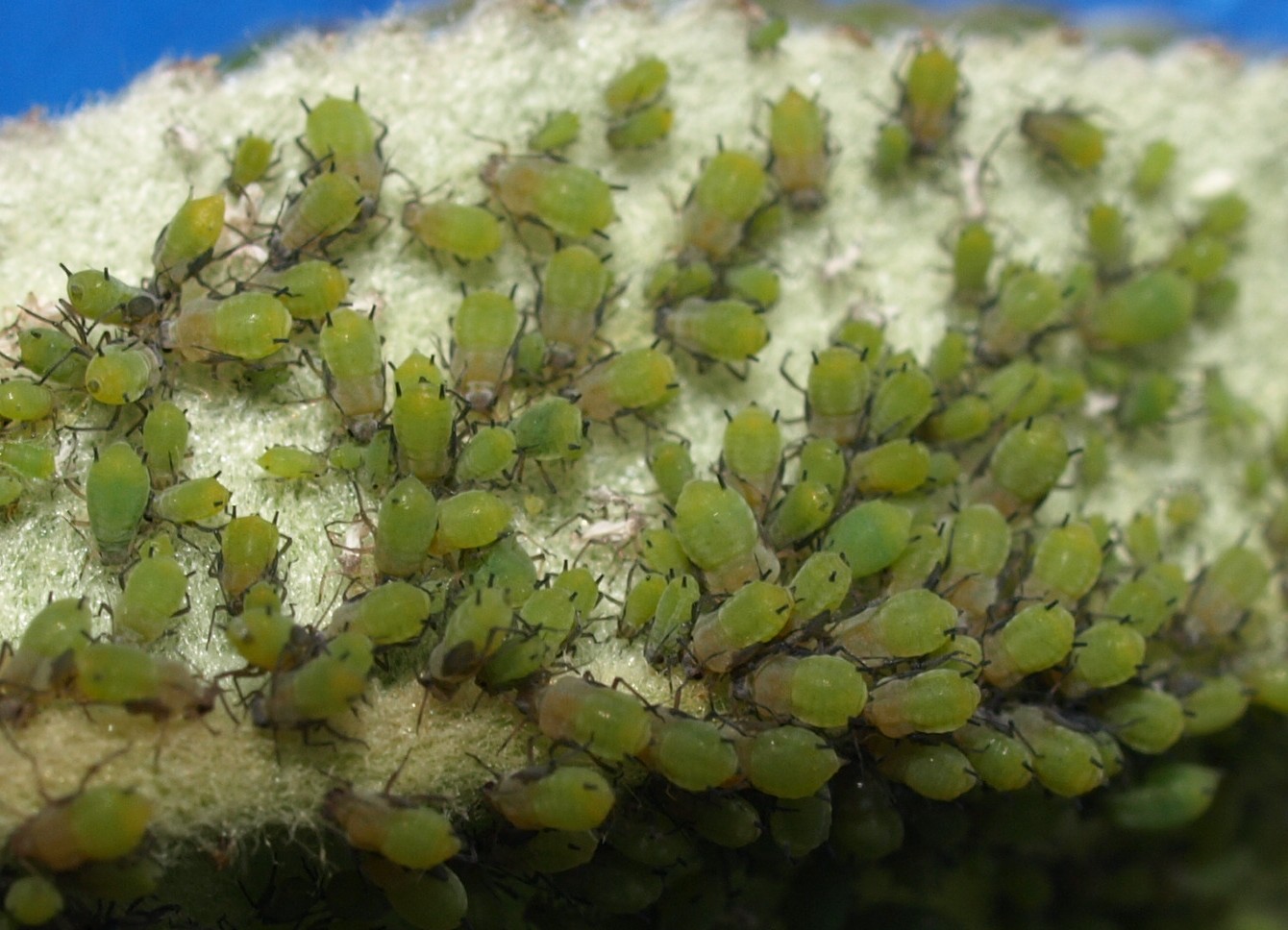Apple Aphid (Aphids)
General Description
Hosts
Apple and pear.
Damage
Leaves - Terminal leaves are curled downward and sticky with honeydew secreted by the aphids.
Fruit - Honeydew may drip onto the fruit causing russet spots and promote growth of black sooty mold.
Shoots - Highly infested shoots of young trees are stunted or malformed.
Identification
Egg - Oval, shiny black.
Immature - Dark green with black legs, wingless.
Adult - Yellowish-green to light green, winged or wingless (below).
 |
| Colony of apple aphids (H. Philip) |
Life History
The apple aphid overwinters in the egg stage on water sprouts and terminals. Eggs tend to be concentrated on a few trees in a planting. Hatching begins as apple buds open in spring. Aphids feed on flower parts and then move to growing shoots. Females produce many generations during the summer and disperse throughout the orchard and to other orchards. Males appear in the fall and mate with the females that then lay overwintering eggs.
Monitoring
Infestations on the terminal 7-10 leaves of 50% of shoots of mature trees in a block can cause fruit damage. Inspect young bearing and non-bearing trees for increasing aphid populations and restricted tree growth.
Management
Biological Control
Predators (ladybird beetles, lacewings, syrphid (hover) flies and predatory midges) and parasitic wasps are usually capable of providing control of apple aphid on bearing trees and often on young trees. Avoid using pesticides toxic to these beneficial insects once they appear on the trees.
Cultural Control
Avoiding excessive nitrogen application will limit aphid populations by reducing succulent growth that is attractive to aphids.
Chemical Control
An application of dormant oil will kill many overwintering aphid eggs and will not affect aphid predators. Apply Cormoran, Malathion 85E, Malathion, Movento, Closer, Beleaf, Sivanto Prime, TwinGuard or Vayego 200SC if few predators are present, aphid populations are increasing and fruit damage appears imminent. Sprays applied before this level of aphid infestation may destroy beneficial insects and result in the need for additional sprays. Apply Movento when sufficient leaf tissue is present to allow for maximum uptake of the active ingredient by the plant. Movento should be applied in combination with a recommended non-ionic adjuvant (e.g. Agral 90). Movento is slow-acting so allow 12 – 18 days for noticeable decline in aphid populations.
NOTE: The sprays listed above will also control other aphids.
